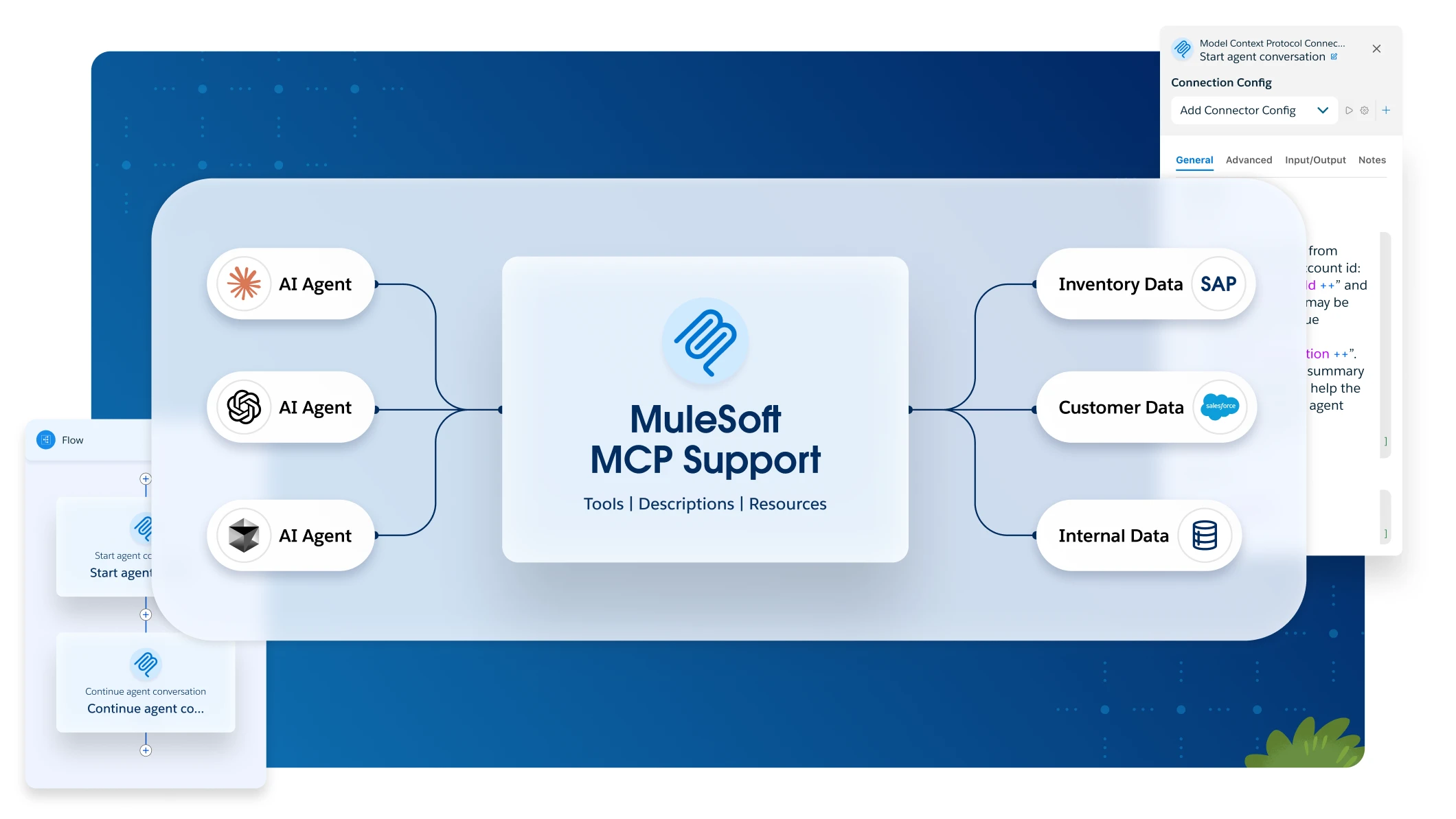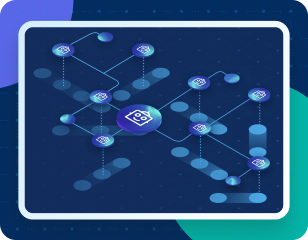What is an API Catalog?
An API catalog is a centralized repository that organizes and documents an organization's APIs, making them easily discoverable and accessible.
As organizations increasingly rely on APIs to power everything from customer-facing apps to internal operations and AI agents , managing them effectively has become a critical challenge. Whether you’re aiming to streamline internal workflows, enhance collaboration, or foster innovation, the right API catalog is an essential part of the process.
In this guide, you’ll learn everything you need to know to get started with API catalogs, including features, examples, and benefits.
API catalog defined
An API catalog is a centralized repository that organizes, documents, and makes APIs accessible within an organization. It acts as a single source of truth, simplifying the discovery and management of APIs for developers and other stakeholders.
Since their introduction, API catalogs have helped teams streamline and reduce redundancy. Now, in the era of AI, API catalogs are becoming even more critical. They enable seamless integration of AI-driven solutions across various platforms and workflows. By consolidating APIs in one location, an API catalog provides the foundation for connecting AI algorithms, machine learning models, and intelligent automation systems with the applications and data they need to operate effectively.
Public vs. private API catalog
Generally speaking, API catalogs are divided into public and private catalogs, each serving a distinct purpose based on security, accessibility, and organizational needs.
Public catalog
A public catalog is a repository of APIs accessible to external developers and organizations. Its primary goal is to enable the widespread adoption of APIs, encourage innovation, and expand the reach of services. The main benefits of a public API catalog include:
- Broader developer engagement: By exposing APIs to external developers, organizations can foster innovation and create new applications that leverage their services.
- Brand visibility: Public APIs help organizations position themselves as leaders in their industry by showcasing their technological capabilities.
- Revenue generation: Monetizing APIs through public catalogs can open new revenue streams.
Private catalog
On the other hand, a private catalog is a repository that restricts access within an organization. It ensures that APIs are accessible only to authorized personnel, which helps maintain security and compliance. The biggest advantages of having a private API catalog include:
- Enhanced security: APIs that handle sensitive business data are safeguarded within the organization’s infrastructure.
- Improved productivity: Developers can quickly discover and reuse existing APIs, reducing development time and effort.
Compliance and governance: A private catalog ensures API usage aligns with internal policies and regulations.
API catalog vs. API portals
API catalogs and API portals are often confused since both act as central hubs for working with APIs. However, they serve different roles:
An API catalog focuses on managing APIs as assets by providing visibility, structure, and governance. It’s designed specifically for API management and discovery within an application ecosystem and typically includes information such as documentation, metadata, categorization and tagging, governance and compliance tools, and version control tools, all focused on API lifecycle management.
An API portal, on the other hand, is an interface that enables developers to interact with and consume APIs. It acts as the "storefront" or gateway where APIs are showcased and made available for use. External or internal developers design portals for API consumption and onboarding rather than management, making them more helpful for developers and API consumers who need resources and tools to integrate APIs into applications.
Examples of API catalogs
API catalogs are utilized across various industries to address diverse challenges and achieve specific objectives. Here are some examples:
E-commerce platform API catalog
E-commerce platforms have unique requirements for real-time data and rapidly changing product inventories. To support this, an e-commerce company might build an internal API catalog to manage APIs for product listings, inventory tracking , and supply chain operations. This catalog would help developers across teams quickly discover and use existing APIs without duplicating efforts.
Healthcare provider API catalog
Healthcare providers require secure, compliant, and well-managed systems to handle sensitive data and complex workflows. A healthcare organization could develop an internal API catalog to manage APIs used for patient data management, appointment scheduling, and billing systems. Centralizing these APIs would also help ensure they meet the strict regulatory compliance requirements of healthcare regulations, such as HIPAA.
AI agents
AI agents rely on access to a wide range of services and data sources to operate effectively and autonomously. An API catalog provides the foundation for these capabilities by organizing and centralizing the APIs that AI agents use to perform tasks, make decisions, and communicate with other platforms. This structure enables faster development and more consistent performance in agentic systems and workflows.
Key features to look for in an API catalog tool
When evaluating tools for an API catalog, focus on features that enhance organization, usability, and governance while aligning with your organization's needs. Here are the key tools and features to look for in an API catalog:
- API discovery and search: Quickly locate APIs using advanced search and filters (by name, category, tags, or functionality) to save time and avoid redundant work.
- Categorization and tagging: Organize APIs by type, use case, or team with flexible tagging to make the catalog easier to navigate and aligned with your business structure.
- Version control and change management: Track versions, deprecations, and updates with notifications so developers stay informed and projects aren’t disrupted.
- API gateway integration: Connect seamlessly with API gateways for streamlined deployment, monitoring, and policy enforcement.
- Collaboration tools: Look for features like commenting, approval workflows, and feedback loops to support cross-team development and review.
- Analytics and reporting: Use built-in dashboards to track API usage, monitor performance, and make informed improvements to your API strategy.
- Support for public and private APIs: Manage both external and internal APIs with the right access controls, documentation, and governance for each use case.
- Testing and sandbox environments: Enable developers to safely test and experiment with APIs before going live, reducing integration issues.
- API lifecycle management: Maintain full visibility and control from creation through retirement to keep APIs up-to-date and aligned with evolving needs.
- Cross-platform integration: Ensure compatibility with CI/CD tools, DevOps platforms, and other API management systems for a smoother development workflow.
Build or buy an API catalog?
Whether to build or buy an API catalog depends on your organization’s specific needs, resources, and long-term goals. Both options come with distinct advantages and challenges, so understanding the benefits of each can help you make the best decision.
Building an API catalog
Building an API catalog in-house gives you full control to shape it around your organization’s specific needs. You can customize everything from how it fits into your workflow to the features and integrations it supports. That level of flexibility is great for teams with complex systems or unique use cases. Keep in mind, however, that it also means a bigger commitment in terms of time, budget, and technical resources.
Advantages of building an API catalog in-house:
- Full customization to meet specific business needs
- Greater control over features, design, and integrations
- Suitable for organizations with complex workflows
Challenges of building an API catalog in-house:
- High time, cost, and resource investment
- Requires dedicated technical expertise
Purchasing an API catalog
Purchasing an API catalog provides a ready-made solution that’s quick to deploy and often comes with built-in documentation, version control, search capabilities, and analytics. Vendor-provided solutions typically integrate well with existing API management tools, making them suitable for organizations that want to hit the ground running with minimal setup effort. However, a purchased catalog may lack customization options with an in-house solution and could include unnecessary features for your organization.
Advantages of purchasing an API catalog:
- Quick deployment with minimal setup effort
- Built-in features like documentation, version control, and analytics
- Easy integration with existing API management solutions
Challenges of purchasing an API catalog:
- Limited customization options compared to an in-house solution
- Inclusion of unnecessary features that don’t align with your needs
Ground your app ecosystem in a robust and flexible API catalog system with MuleSoft
An API is one of those tools that can pull everything together. Without one, you’d risk teams duplicating work, relying on outdated or undocumented APIs, or struggling to find the right interface for a task. A well-structured API catalog brings clarity and control, making development more efficient and collaboration more seamless.
Ready to learn more about how a managed API catalog can fit into your larger API strategy? Discover MuleSoft Anypoint API Catalog.
Extend your AI capabilities with MuleSoft.
Start your trial.
Try MuleSoft Anypoint Platform free for 30 days. No credit card, no installations.
Talk to an expert.
Tell us a bit more so the right person can reach out faster.
Stay up to date.
Get the latest news about integration, automation, API management, and AI.




